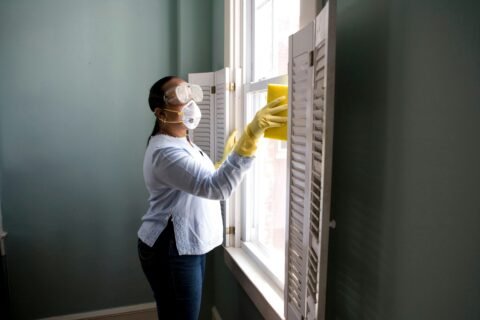Dealing with property damage after a natural disaster can be overwhelming, but taking immediate steps to repair your home is essential for safety and comfort. Natural disasters like hurricanes, floods, or earthquakes can leave homes in bad shape, requiring urgent attention. Repairing your property might feel like a huge task, but with proper planning and budgeting, you can tackle it step by step.
Getting started might be the hardest part, especially when facing a long list of repairs and financial concerns. It’s important to approach the situation with a clear plan to avoid unnecessary stress and expenses.
From understanding your insurance coverage to hiring the right professionals, every step you take will contribute to a smooth and organized recovery process. Let’s dive into the key steps you need to take to get your home back in order:
Prioritize Repairs & Remodeling
Once you have a clear idea of the damage, it’s time to prioritize the repairs. Start with the most critical issues that affect the safety and security of your home, such as structural repairs, roof leaks, or electrical problems. These should be your top priority because they can pose serious risks if not addressed immediately.
After taking care of the urgent repairs, you can move on to less critical ones, like cosmetic fixes or improvements that can wait. By prioritizing the repairs, you’ll be able to allocate your budget more effectively and tackle the most important tasks first.
Contact a Public Adjuster
Navigating insurance claims after a disaster can be complicated and time-consuming. This is where a public adjuster can be a valuable resource. An experienced claims adjuster, like the ones at CCA Public Adjusters, works on your behalf to help you get the maximum payout for your claim. They specialize in helping homeowners and business owners navigate complex insurance claims to secure fair settlements for property damage caused by disasters.
Hiring a public adjuster can be especially beneficial if your claim is large or if you’re having trouble with the insurance company. They are experts in understanding policy language and can advocate for you, potentially saving you a lot of stress and helping you get the funds needed to cover your repairs.
Create a Detailed Plan
With a clear understanding of the damage and your insurance coverage, you can start creating a detailed repair plan. This plan should include a list of all repairs needed, a timeline for when each task should be completed, and a budget estimate for each repair. Break down the repairs into manageable steps so you can tackle them one by one without feeling overwhelmed.
Having a repair plan helps keep everything organized and gives you a clear path forward. It also makes it easier to communicate with contractors and keep track of the progress, ensuring that the repairs are completed on time and within budget.
Set a Realistic Budget
Setting a realistic budget is one of the most important parts of planning your property repairs. Start by gathering estimates for the cost of materials and labor for each repair. Be sure to include a buffer in your budget for unexpected costs that might arise during the process. Comparing quotes from different contractors can also help you find the best price for the repairs.
Your budget should reflect both the immediate needs and the long-term goals for your property. If your insurance covers some of the costs, factor that into your budget to avoid overspending. By planning carefully, you can manage the financial aspect of the repairs without unnecessary stress.
Explore Funding Options
Even with insurance, covering all the repair costs can be challenging, especially if your policy doesn’t cover everything. It’s essential to explore different funding options to bridge any financial gaps. Start by checking if there are any federal, state, or local assistance programs available for disaster recovery.
Additionally, consider using personal savings or applying for a home equity line of credit if you have sufficient equity in your home. Some banks and credit unions also offer special loans for disaster recovery. Exploring these options will give you a better idea of how to fund the repairs without straining your finances too much.
Hire the Right Contractors
Hiring the right contractors is important for getting quality repairs done. Start by looking for contractors who have experience with disaster repair work, as they will be familiar with the specific challenges and requirements involved. Always check their credentials, including licenses, insurance, and references. It’s a good idea to get multiple quotes to compare prices and services.
Be wary of contractors who ask for large upfront payments or who cannot provide proof of insurance. Scams are common after disasters, so take your time to verify each contractor’s reputation. By doing your research and choosing reliable professionals, you can avoid unnecessary headaches and costly mistakes.
Monitor Repair Progress
Once repairs are underway, it’s important to stay involved and monitor the progress. Regular check-ins with your contractors can help you track whether the work is being completed on schedule and within the agreed budget. Don’t hesitate to ask questions if you notice any delays or if something doesn’t seem right. Keeping an eye on the repair work helps to catch potential issues early and address them before they become bigger problems.
Documenting the progress with photos and notes can also be useful, especially if there are discrepancies with the contractor’s work. This will give you a record of what has been done, which can be helpful if disputes arise. Staying engaged throughout the repair process will help keep everything on track.
Plan for Future Mishaps
After completing the repairs, take some time to plan for future preparedness. Consider making upgrades that can help protect your home from similar disasters in the future. For example, installing storm shutters, upgrading to impact-resistant windows, or reinforcing your roof can make your home more resilient against severe weather.
Additionally, review your insurance policy to check if any updates are needed based on your recent experience. Making a plan for emergency supplies and evacuation routes and keeping important documents safe can also help you be better prepared next time. By taking these steps, you can reduce the risk of damage and the need for extensive repairs in the future.
Recovering from a natural disaster and repairing your property can be an overwhelming process, but with the right approach, you can navigate it more smoothly. Using the expertise of a public adjuster can make dealing with insurance claims easier while staying on top of the repair progress keeps everything moving forward as planned. Finally, thinking ahead and preparing your home for future disasters can save you a lot of trouble down the road. With careful planning and the right resources, you can rebuild stronger and more resilient, ready to face whatever comes next.





